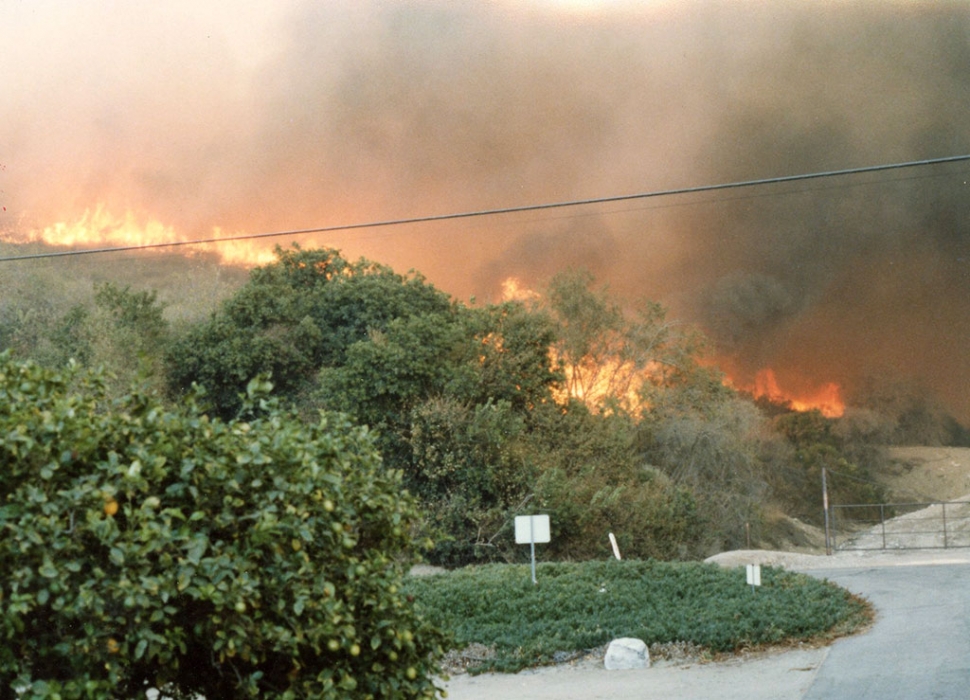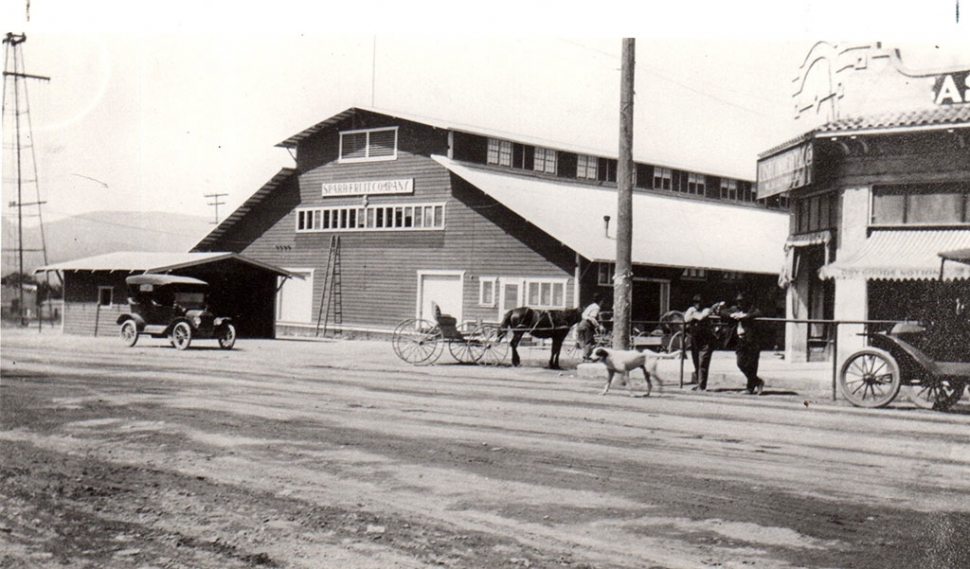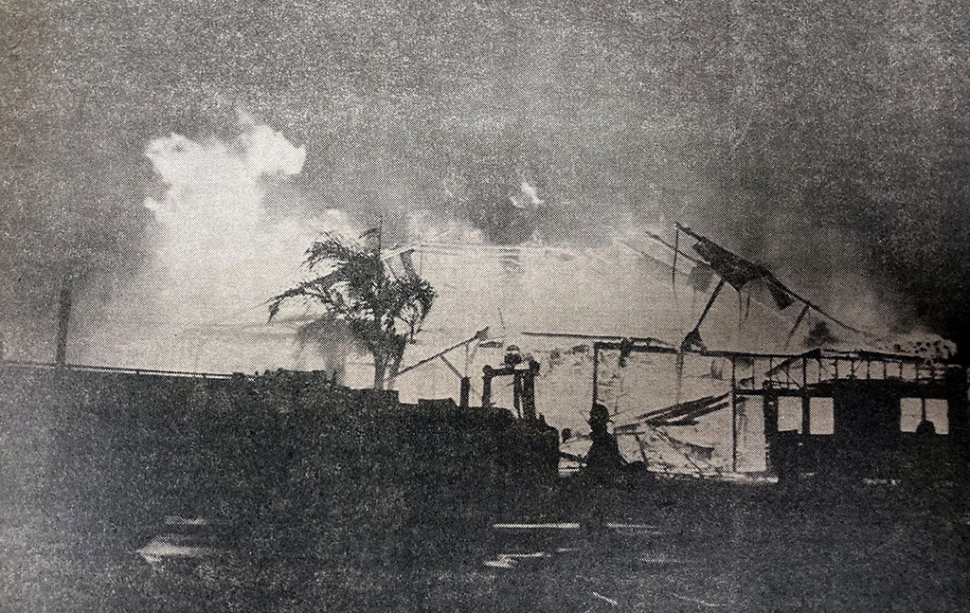|
50 Years Ago Southern California Suffered One of the Largest Fires in History, “The Clampitt Fire”
 Pictured is the Clampitt Fire coming down to Guiberson Road. Photos courtesy Fillmore Historical Museum. By Anonymous — Wednesday, September 30th, 2020
 Pictured above is the Sparr Packing House, 1915 (it had been replaced in 1913 after an earlier fire).  Fire crews fighting the fire - Fillmore Herald, Oct. 1, 1970. Courtesy Fillmore Historical Museum Fifty years ago, this week, our community almost came to an end. Southern California was ablaze with the largest wildfire in its history to date. The Clampitt Fire had started on the morning September 25, 1970, in the Newhall Pass and within a few hours the winds pushed it to Malibu. The fire crested the ridge into the Santa Clara River Valley and soon was threatening homes and ranches along Guiberson Road and as well as Newhall Ranch, Camulos and Piru. At the peak of the emergency, there were 700 men on the fire lines with assistance coming from all over the state. On the evening of September 25, one group of fire trucks from King City was speeding down Hwy 126 east towards the fire when about three miles west of town, they saw the glow of flames in Fillmore. Rather than going on to Simi Valley to fight the Clampitt fire they diverted into Fillmore. The former Sparr Packing House on southwest corner of Central Avenue and Main was on fire. Built in 1913 after being destroyed by an early fire, it now was leased to the Ventura County Fruit Growers. It was not currently in use. It was later determined that two teen-age boys in the structure “gasoline sniffing”, had ignited the gasoline, burning themselves, and setting the building on fire. Fillmore’s Fire Department was on standby to respond to the Clampitt Fire at the County Fire Station when the call came in to respond to the packing house fire. By then the building was fully engulfed and spreading to neighboring buildings. Besides the King City Fire Department, units from Ventura County, CalFire, Santa Paula and the U. S. Navy joined the fight. The fire jumped the railroad track and ignited and destroyed Bricker’s Store. In the store was a supply of unsold fireworks left from the 4th of July which ignited along with some ammunition. Parker and Sons Automotive, which was in the Rudkin Building (2020, Genmai’s location) also suffered damage. Dr. Nelson, whose veterinary clinic was on Santa Clara, rushed to the clinic to evacuate his patients to his home and kept the roof of the clinic wet to prevent the building from igniting. According to Dr. Nelson, the heat from the fire was so intense that the telephone poles at the back of the clinic began to burn. The fire departments were able to keep the fire from spreading to the homes to the west. The packing house itself was a total loss. So, what was happening with Piru and Bardsdale who were still threatened by the Clampitt fire? According to the October 1, 1970 Fillmore Herald, backfires were set to save at least three homes on Newhall Ranch and residents from Jack Warring’s home on Camulos Ranch to the James Shiell’s home on Guiberson road had to evacuate but were saved. Flames lapped at the edges of Elkins Golf Course. For four days, the fire continued to flare up. In total , the Clampitt Fire scorched 107,103 acres of brush and forest, destroyed 80 structures and killed four civilians (source: University of California Division of Agriculture and Natural Resources). Fillmore has a history of being threatened by fire from the 1905 fire which destroyed most of the Main Street business district, to 1970, to the Thomas Fire. Unfortunately, this will probably not change, so it’s best to be prepared. |
